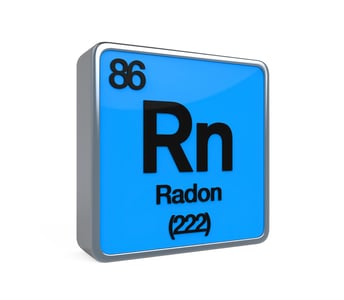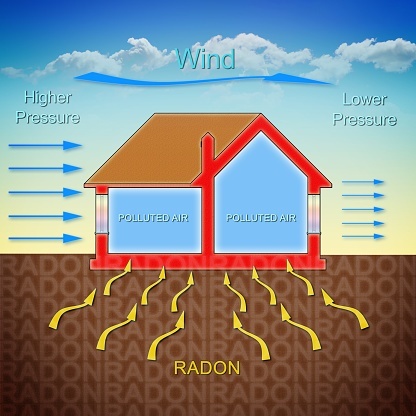Conditions that Affect a Radon Test
Radon is a radioactive gas that is found in the soil and air that we breathe in. It comes from the break down of uranium in rocks and soil, and although it is a naturally occurring gas, exposure to large amounts of radon can lead to lung cancer.

Radon gas finds its way from the soil into our homes, potentially making our living space a dangerous place to live. Once radon is inside a home it become trapped and from there it can build into dangerous levels.
Since radon has no odor, taste, or smell it is impossible to detect whether or not it is even in your home, let alone if it's at a dangerous level or not.
Having a radon test performed inside your home is the only way to know for sure what you're dealing with, and unfortunately, there are several conditions that can affect a radon test and lead to inaccurate readings.
Table of Contents
- Conditions that Affect a Radon Test
- Test Placement and Movement
- Weather Conditions
- Ventilation and Drafts
- Radon Testing
- Schedule a Discounted Radon Test
Conditions that Affect a Radon Test
When you decide to have a radon test performed, it's important to know the conditions that may affect the accuracy of the results. Inaccurate test results could leave you thinking your home is safe, when in fact, it is invested with radon.
#1 Test Placement and Movement
As discussed, radon comes from uranium that is found in soil and rock, which means it enters through the lowest level of your home. This means the best location for a radon test to be placed is going to be the lowest livable level of your home, for most people this would be their basement.
The test needs to be at least 20 inches off of the ground and a minimum of one foot away from the outside walls. This is important to note especially for those who purchase a home test kit, do not make the mistake of placing the kit directly on the floor.
Also, make sure the area around the test is clear, do not place the test within a pile of clutter. A clear area will allow for adequate circulation of air.
The test should not be placed in an area of direct sunlight, drafts or areas of high humidity. All of these conditions have the ability to tamper with the test results.
Once the test has been placed, it is crucial that you DO NOT move it for any reason. A change in placement can skew the detector and change the test results. If you have a radon test set up in your home take the extra precautions to make sure children and pets to not touch the test while it's in use.
#2 Weather Conditions
Rain, thunderstorms and high wind can also have an affect on radon testing results. Radon readings have been known to go down when the outdoor wind speeds increase during periods of high humidity.
When the seasons change such as fall to winter, radon testing can be affected. Radon is often higher inside homes during the fall and winter do to the home being closed and sealed to keep out the cold weather.
If you have your home tested in the summer and the results are on the border of being elevated, it's a good idea to have them re-tested in the winter to see how high the radon levels become once your home is sealed for the winter.
Want more information about radon testing in the wintertime? Read our blog post: "What You Need to Know About Radon in the Winter."
#3 Ventilation and Drafts
In order to obtain accurate test results, radon testing requires closed home conditions during the testing period. This means all windows and doors must remain closed, with the exception of normal entrance and exit of the home.
Opening and closing doors and windows during the testing period will change the ventilation and temperature of the home which will temporarily change the radon levels as well.
When performing a short term test, such as 2-4 days, closed home conditions should begin 12 hours before the testing period begins.
It's important to realize there are some household appliances that will alter the airflow of the home. This includes fireplaces, fans, windows, and wood-burning stoves. All of these appliances can create drafts that pull air through the home. Try to not use them during the testing period unless absolutely necessary.

Radon Testing for your Ohio Home
If you have never had your home tested for radon gas, now is the time to contact a licensed radon testing professional.
Having a radon test performed in your Ohio home is crucial to find out if your living space is free of this harmful gas.
Every single home throughout the state of Ohio will have some amount of radon inside their home, so it's important to find out if your home contains elevated levels of radon or not.
Radon Eliminator has a team of professionals who are licensed with The Ohio Department of Health and who have the experience and training to ensure that your test is performed accurately so you can rest assured that the readings you receive are correct.
We offer Discounted Radon testing to Ohio residents. Contact our professionals today and we will set up a radon testing device in your home to determine the amount of radon gas that you and your family are breathing in on a regular basis.
Click the link below to speak with our Ohio Radon Testing Company today.





